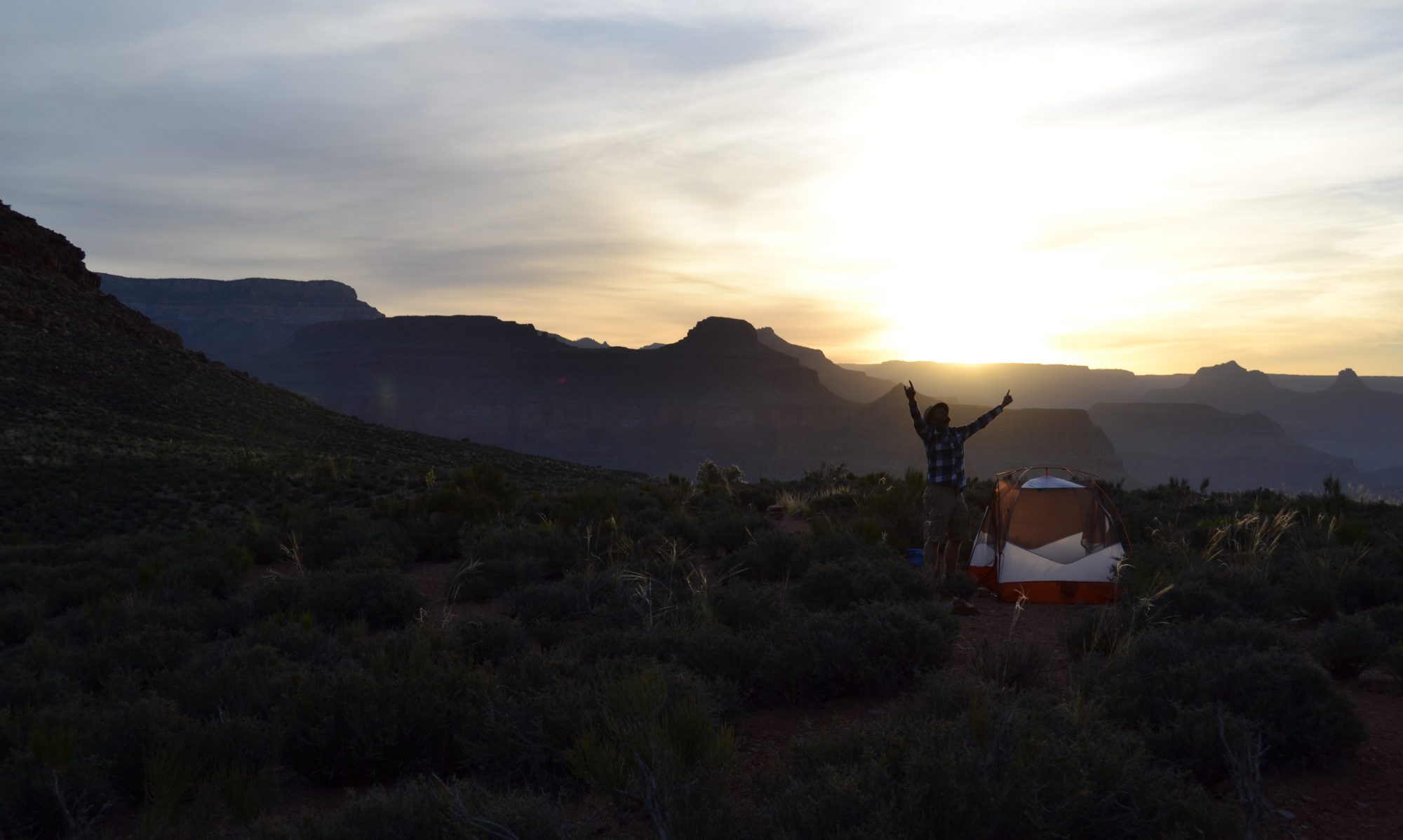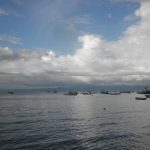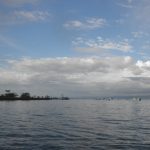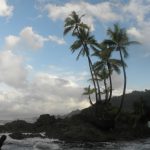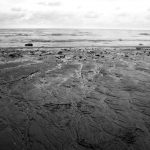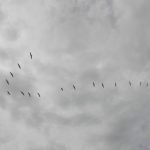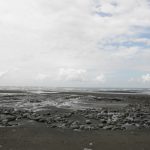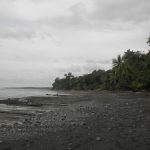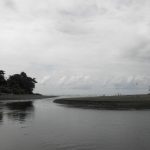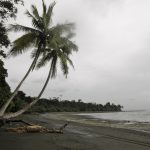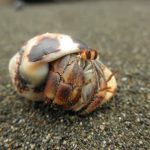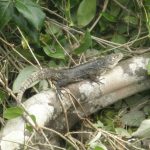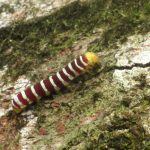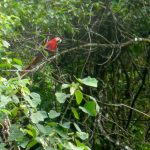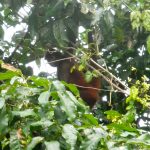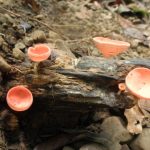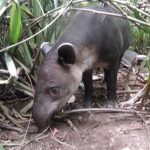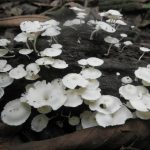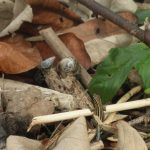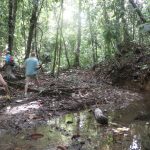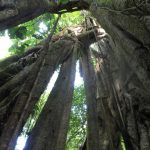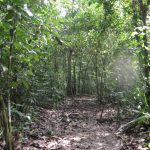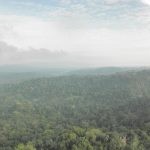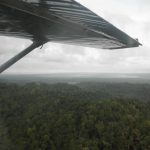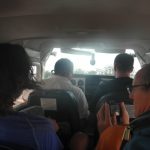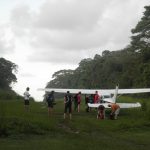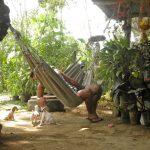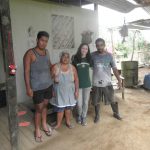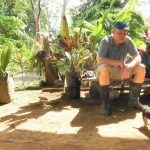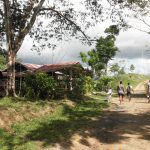Notes and tips on planning a trip to Osa/Corcovado
If you think you can do it on your own and have a group, give yourself a solid non-weekend, during normal bank business hours day to get the passes from the office in Puerto Jimenez. I know it sucks because you’re already “wasting” two days in travel to get to the peninsula and back, but that’s how it works. If you know Spanish, you can try and call the office ahead of time and wire the money to the bank. But really plan on one scratch day to coordinate everything. Maybe go kayaking in the mangroves in the afternoon. Have a nice meal on the water. Chill out.
If you’re looking for a guide, I recommend the two that helped me:
Felix:
felix@osatravel.com
Rudolfo:
rufolfosaenz@hotmail.com
If you’re into hiking, you need to get into the park. It’s a requirement. No excuses. Just make sure you read up on everything, like the rules.
If you’re into backpacking, I super recommend the 3-day hike I couldn’t do: figure out how to get to Los Patos (the main road, of course, goes nowhere near it, most people seem to take a cab to the nearest town and hike in), hike in to La Sirena, spend a full day at La Sirena, and hike out to La Leona, and then hike to Carate to catch the Collectivo back into town.
If you have two days, I recommend doing what I did: bite the bullet to fly in, spend a whole day at La Sirena where all the animals are, and hike out to La Leona/Carate.
If you have one day, La Leona/Carate might still be totally worth it. That was one of my favorite sections. But it’s such a pain in the ass to get a pass, I’m not sure that end of the time investment is worth it. Matapolo – with waterfalls and dolphins and lots of cool wildlife is also totally worth a look – and I’m upset I didn’t make there myself.
Here is the best map I could find. Can you feel my frustration? Especially because I love maps. I’m a map nerd. In the day and age of Google Maps and GIS, this is a pretty sad thing, with edits in what look like Paint. But, it’s better than nothing.

If you’re a normal, pampered American, there’s some nice, waterfront lodges at La Leona. Or, Drake Bay has a bunch of resorts and offers daily boat rides to La Sirena.
The tour company, Osa Wild, is worth a look: they come highly recommended by the local as being both sustainable and locally minded. If you want to meet some of the more indigenous people, they can take you there.
The Corner Hostel is the perfect place for backpackers to meet up and hike in/or relax after getting out. It’s two blocks from the bus station and across the street from where the Collectivo will pick you up and drop you off. As far as I could tell coming in, it doesn’t really have an online profile or way to book ahead of time. But it will probably have a bed available. It also has locked storage for the extra crap you don’t want to hike in with and laundry services for the dirty crap you hike out with.
The Jungle hostel is nice if you want to be in immersed in the jungle, but aren’t too concerned with having access to the town.
There are a ton of waterfront hotels if you’re in more of a middle price range (vs my backpacker price range). They are almost never booked if you’re ok with getting here and wandering around until you find something. Most of these places haven’t found the internet yet. Be prepared for cold showers and minimal wifi, no matter where you are. Not that neither exists, just don’t get your hopes up, and you won’t be disappointed.
Corcovado National Park, Osa Peninsula, Costa Rica
1/6/14 – 1/7/14
At 4:30 am I was up with the rooster, but before the birds and sun. I blindly packed my things in the dark, not wanting to wake my hostel mates with a bright light. By 5am I was making my way down the dirt road, bogged down by my 45 pounds of luggage, a newfound dog-friend trotting briskly by my side. A Taxi seemed expensive and I honestly had no idea how to call one anyway. I got to the airport at 6am, a half hour early for my flight, unsure of what airport logistics would look like here. I was the first one there. The pilot was in the back still having breakfast, clearly on Tico time, not at all worried that all of his passengers had yet to show up.
As soon as the pilot saw me, he scolded me for carrying too much weight. At first I thought he was concerned about the plane (though me+my luggage probably equals the weight of an average person); but eventually I realized he was questioning my back-packing skills. I mean…he was right. I was quite the site to see with one 70 gallon bag on my back and another smaller bookbag on my front. The pilot, a little shaky with his English, then proceeded to act out me sinking into the mud and unable to get out. I didn’t need much more convincing than that. He shoved a couple of plastic trash bags in my hand and showed me to a room where I could store my stuff. The room was small with a single made bed in the center, the door opening out into the main area of his “terminal.” I dumped my smaller bookbag and half the contents of my backpack into a corner on the opposite side of the door. I was relieved to get rid of so much stuff.
Soon two German couples arrived – one younger, one older. All of whom looked like they were carrying nothing. Of course. WTF. I still must have had the heaviest pack. I carried:
– 2-person tent
– fleece sleeping bag liner
– (1) change of clothes
– (1) swim suit
– roll of duct tape
– knife
– bandaids
– jar of peanut butter + plastic spoon
– Jetboil stove
– Easy Mac
– (2) 1-liter water bottles
– Steripen water purifier
– headlamp
– camera
– notebook+pen
None of this seemed terribly superfluous. What did they bring? From the looks of it, a small water bottle and a camera. Maybe a change of clothes. Hard to tell. Wasn’t I warned this was a strenuous hike through the jungle? And that there would be limited provisions at the main camp, La Sirena? Cause no one else seems prepared for that.
The pilot handed me my park entrance/overnight permit as the six of us piled into the plane. From the air, the whole Peninsula looked like an unending sea of trees, undulating through hills and mountains to the ocean. It was gorgeous, but I was distracted. Did I really just leave my laptop and half of my belongings in a unlocked room with a stranger? Because fat chance those are still going to be there when you get back in two days. Way to think that one through. And what do you know about this pilot? Did you see a license anywhere? And what happened to finding a group of people to hike with? Are you really going to try this alone? Which German couple speaks the most English and looks like they know what they’re doing? Maybe you could creepily stalk them on the hike out. You know, don’t cramp their vacation, but stay within shouting distance in case you get attacked by a howler monkey. Would your vocal cords be able to compete with a howler monkey’s? Maybe I should practice later.
Thus was my thought process as we bounced into a landing on the grass runway. At least that part was over.
The lodge was almost like a one-story beach house on the Outer Banks. A tall stair case, filled with muddy shoes on either side, lead to a wrap-around porch with rocking chairs and benches looking out onto a grass field. A small museum was housed in a larger room to the left, the ranger’s office to the right. I walked around a little to try and get my bearings. Boardwalks led to a dining hall, dorm rooms, bathrooms, and an elevated camping area. It was rustic – the showers would inevitably be cold – but this was not Bear Grylls survival time. Solar panels connected to a battery storage reserve even charged cell phones and laptops for two hours every night. I must have looked lost and confused though. The ranger came up to me, yelled at me for tracking mud in, and then asked to see my permit. To my surprise, the ranger informed me that the pilot had booked me a dorm bed. No way, I told the guy, I lugged this tent through all of Costa Rica, I was sure as hell going to use it. And I wasn’t going to put it under some sissy roof with a platform. I was going to camp for real. Because I could. So I did. I staked my bright orange and maroon tent right on the front lawn.
Overall, the ranger was less than helpful. As the sole ranger assigned to the station, I felt a little bad for him. That’s a lot of responsibility. Especially when you’re probably more interested in the biology than dealing with annoying people. But at the same time, I can’t be the first idiotic tourist to come through. Coming in, I thought the whole place would be packed, but if the pilot could find me a bed and anyone could camp out on the lawn, what was all the fuss about? I wasn’t really given a run down of the rules. I was scolded later for using my stove for a purpose other than boiling water – a rule I had not been told and which made almost no sense to me. I was told not to swim anywhere but at this one watering hole. But I wasn’t really sure what that one watering hole was called or where it was located. There were no maps, save one of the surrounding area that looked hand drawn and was tacked to the wall. For the hike out, there was a tide chart so you knew when to cross the rivers, but it didn’t say how many miles it was to the crossing points. This is perhaps my biggest pet peeve: not having all the information I need to make the proper decisions. I am smart. I have hiked before. I can read. But how was I going to get out of here if I couldn’t even find the trail head? And while online reviews of this hike made it sound commonplace to go in without a guide, I didn’t see a single group without one. Who could I latch on to now? Could I just get up really early and trail a couple of guides?
My savior came from the latin word for luck: Felix. I had decided to stop worrying and relax with my jar of peanut butter on the porch. I still had all day to wander around La Sirena, and could maybe even meet people at dinner. I was still convinced I could do this on my own if I needed. If I couldn’t find the trail, I could find the beach, and it would be a straight shot south from there. Seated next to me on the porch, absorbed in his Samsung Galaxy, with his feet propped up against the railing, was Felix. He had apparently been watching me the whole time, observing me looking scrambled and confused and in need of help. And I guess he decided to adopt me. This happens more often than you think. Maybe it’s my face. I belong on one of those Sarah McLachlan help a wounded puppy commercials. I don’t remember what he struck up a conversation with me on, but mid-way through he revealed he was a guide, and by the end had convinced me that his clients, a very nice, young Swedish couple, wouldn’t mind me tagging along.
I had rejected getting a guide so vehemently that it was tough to adjust. Yes, they seemed really expensive. Way beyond my budget. But my real problem with guides is that I always feel like I should be taking notes. That somehow if I could just remember every detail or fact they spew out, the experience would mean more. I’m intimated by how much they know. Which is great for keeping your ego in check, but also harmful in de-valuing your own instincts and first impressions. Guides tell you what to think, instead of you forming your own opinion. At museums, I like to wander around by myself first, before appending my tour with a formal guide. On the trail, I start to just follow the person in front of me rather than pay attention to my surroundings. Felix and I would get into debates on this. “You see more with a guide, it’s safer” he kept stressing. I didn’t debate the safety aspect. But, while Felix was amazing at finding animals and pointing them out to you, I didn’t want to see more, I wanted to feel more. I wanted to experience living at the edge of an untouched national park – get back to worrying about the basics of water and food and shelter and forget about the rest of the world. Close my eyes and listen to the sounds of the forest, not dash from one activity to the next. Maybe I’m weird. I’ve been described as pokey before. I am sure most tourists are interested in seeing the most stuff with the least discomfort. Obviously you shouldn’t be me and try and do it alone, I didn’t even want to do it alone, but if you’re an experienced hiker and have a group and seek out all of the information I couldn’t seem to find, I’m still not completely convinced you need a guide. If you have never backpacked or are at all uncomfortable with the outdoors or are by yourself, hire a guide – they will become your best friend.
At dinner, I met up with the guy who had to told me to try the airport to get a pass into the park. He was guiding the trip I had originally wanted to do: enter through Los Patos, spend a day wandering around La Sirena, hike out to La Leona/Carate. I was jealous. When he talked about his hometown, Matapalo, on the tip of the Osa Peninsula, his eyes lit up with a genuine affection. Guides like this guy, Rudolfo, and Felix had to be tourism majors, memorizing hundreds of species’ Latin, English, and Spanish names, become certified guides through the government, and work relentless hours (Felix apparently worked Christmas and New Years this year) – all to give tourists like me a glimpse of the backyard they grew up in.
I stuck with Felix and the Swedes for a majority of the hikes at La Sirena and the outgoing hike to La Leona/Carate. The Swedes walked super fast – we finished hiking out all 12 miles before noon – I’m usually happy if I do 10 in one day. But we saw a ton. I climbed rocks and made the guides nervous and cooled off in a river and became mesmerized by the ocean and enthralled with the hermit crabs. The last few miles along the beach were some of my favorite. The whole world opened up. Macaws flew over our heads, always in life-long pairs of two. Rogue palm trees peaked out of the forest, stretching toward the ocean. I was not at all surprised to learn Jurassic Park was filmed in Costa Rica. I kept waiting for a T-Rex to come bounding out from the jungle. Of course, my camera had died by this point. But I don’t think a picture could have captured it anyway.
When we emerged from the hike, Felix and the Swedes got their own ride back to Puerto Jimenez while I waited for the 4pm Collectivo. I tipped Felix $20 and a six pack of Pilsen. It seemed appropriate, though I can only guess his normal daily rate is in the hundreds. Apparently a couple of years ago Felix got a really bad review from an American travel writer. I don’t know the details, but I’m glad the experience didn’t stop him from showing me so much kindness. Though it took forever to wait for the Collectivo, on top of sitting for the two hour ride back to Puerto Jimenez on said Collectivo, I was so glad I did. If I had just ridden in taxis and planes and private tourist buses, I think I would have met the Tico’s involved with tourism and would not have seen how the rest of the country lives.
The Collectivo had everyone. It was like a hayride with leather seats and a roof, stopping every few minutes to let people climb in or hop off. Though Costa Rica’s infrastructure has improved substantially over recent decades, the Collectivo bumped along down dirt and gravel, occasionally even wading through small rivers. I can’t imagine how it crosses them during the rainy season. I had a discussion with a native Costa Rican, clutching an expensive-looking DSLR, on the progress of his documentary on Osa gold panners. Corcovado National Park shut down most of the gold mines in the area, changing the landscape from almost industrialized back to untouched forest. But this left a lot of the miners without jobs. Most barely eek out a living panning gold, but every few years someone gets lucky and inspires the rest to keep going. Like nature’s lottery. Today, the documentary film maker informed me, most of the guys decided to fish on the beach. To me, that sounded so much better than trying to pan for gold on this oppressively hot afternoon. A handful of what looked like farm laborers climbed aboard silently, their black rubber boots caked in dust. A man that sat across from me dawned what I can only guess are hand-out thrift store clothes. Don’t get me wrong, he looked put together, not tattered – but I doubt he volunteered with a Louisiana Baptist Church’s 2007 Habitat for Humanity project, or that he had heard of Virginia Tech, the school emblazoned on his cap. One middle aged man seemed so excited to be there. Like a dog, his long brown hair whipped in the wind as he excitedly gazed out the front, eagerly pointing out any wildlife to his less-enthused friend. Some tourists climbed aboard, discussing the abysmal weather back in the States, a place that suddenly felt so far away. An energy “consultant” (I hate that title, it’s the opposite of descriptive to me, which makes it just sound pretentious, sorry to all consultants out there, my hatred is from a lack of knowledge so send me an email about what you do and maybe I’ll change my mind) from DC sat next to me. Two girls thumbed through pictures from the day on their camera. It was a beautiful afternoon. The Collectivo dropped us off right in the heart of Puerto Jimenez, just as the sun was beginning to set. It had been a long two days. I was ready for some pizza and a nap.
Getting in to Corcovado
1/5/14
Apparently just getting in to Corcovado is a journey all its own. In my research beforehand, I had found that this was one of the coolest places to go, and one of the only places suitable for a good three day backpacking hike. Also in my research I saw there was no clear way to get into the park. Buses. Taxi. Private shuttle. Airplane. Boat. You could buy tickets at this office, but it somehow involved wiring money to a bank? That seemed weird. Or you could book a tour. Some places said it required a guide. Others did not. Online, it felt like a wash, so I decided to figure it out when I got there – surely things would be more clear then.
Except not. Here’s what I was able to find out. To get into any national park is $10 per day. It is then $4 to camp at La Sirena and $8 to have a bed in the lodge. Plus money for meals. Only a limited number of people are allowed in the park per day and sometimes it fills up fast, especially if you want to stay overnight. To get a pass directly from the Park organization, you have to go to their office, get a ticket, walk 15 minutes across town to the bank to pay the fee, then walk back and officially get your pass. The office opens at 8am, and this whole process probably takes 30-45 minutes. If there’s a line, there goes your whole morning. Besides how ridiculous all that sounds, the bank is closed on weekends so there is no way to get tickets on those days and the $8 shuttle service leaves at 6am, two hours before the office to get the tickets even opens. Sometimes, therefore, the easier way is to book through a tour company who handles all of that for you. But often they like to charge at $20 “service fee” – and that’s before they even try and sell you a guide. One day trips started around $75, 3 day trips I saw priced between $400-$700. Be careful because some of these included transportation while others did not. If you miss the shuttle (which some companies like to conveniently not mention its existence) its easily an additional $40 for a cab ride to Carate. I have heard that sometimes they will tell you La Sirena is all booked up when actually the lodge is booked and there are plenty of tent camping sites. It’s hard to tell how accurate that is.
The border is also not technically at the park, but some 3 km before it. It’s a couple hour drive to Carate. And then a couple hour hike from Carate to the park’s border at La Leona. It’s 12 miles from La Leona to La Sirena, a distance I thought could easily be hiked in a day if I could stay at the ranger station overnight. Because it skirts the beach and is used fairly often, I was told this can probably be hiked without a guide. But I then wanted to cut across the park, off the coast and through the jungle, to the Los Patos ranger station. However, I was told that the trail in this area is much less clear, and should not be attempted without a guide or GPS. Between the trail’s unuse and old gold mining paths that criss-cross the actual trail, three different groups have had to have search parties come after them this year alone. One group has still not “officially” been found – but the guy assured me that they probably found a way out of the park, just not past the ranger station.
Great. Expensive guides, stories of missing bodies, impossible tickets to find. This trip had almost come to a halt. Several places told me no more tickets were left and tried to offer me other tours outside of the park. But that’s not what I came here for. After grilling some of the guys for a while and making it clear that I was going to stare at this map all day until something worked out, one of them said I could try flying in to La Sirena. OK, I’m listening. The pilot had bought up overnight tickets ahead of time for the busy season and was giving them away if you took a plane down instead of hike in. One guy in the tourist-info-sell-you-stuff center quoted me $130. A different guy at the same place told me to go directly to the airport and sort things out with the pilot myself. His quote was $26 cheaper. For $104 I get an $80 early morning flight into La Sirena, giving me an entire day to walk around on the trails near the station, plus the $24 in park fees ($10 x 2 days and $4 for one night of camping), so the next morning I can still hike, just on the safer trail out of the park, in time to catch the 4:30pm shuttle back to Puerto Jimenez. Let’s hope it works as planned. Again, more expensive than I had hoped, but not the end of the world – maybe even the best way to do it.
